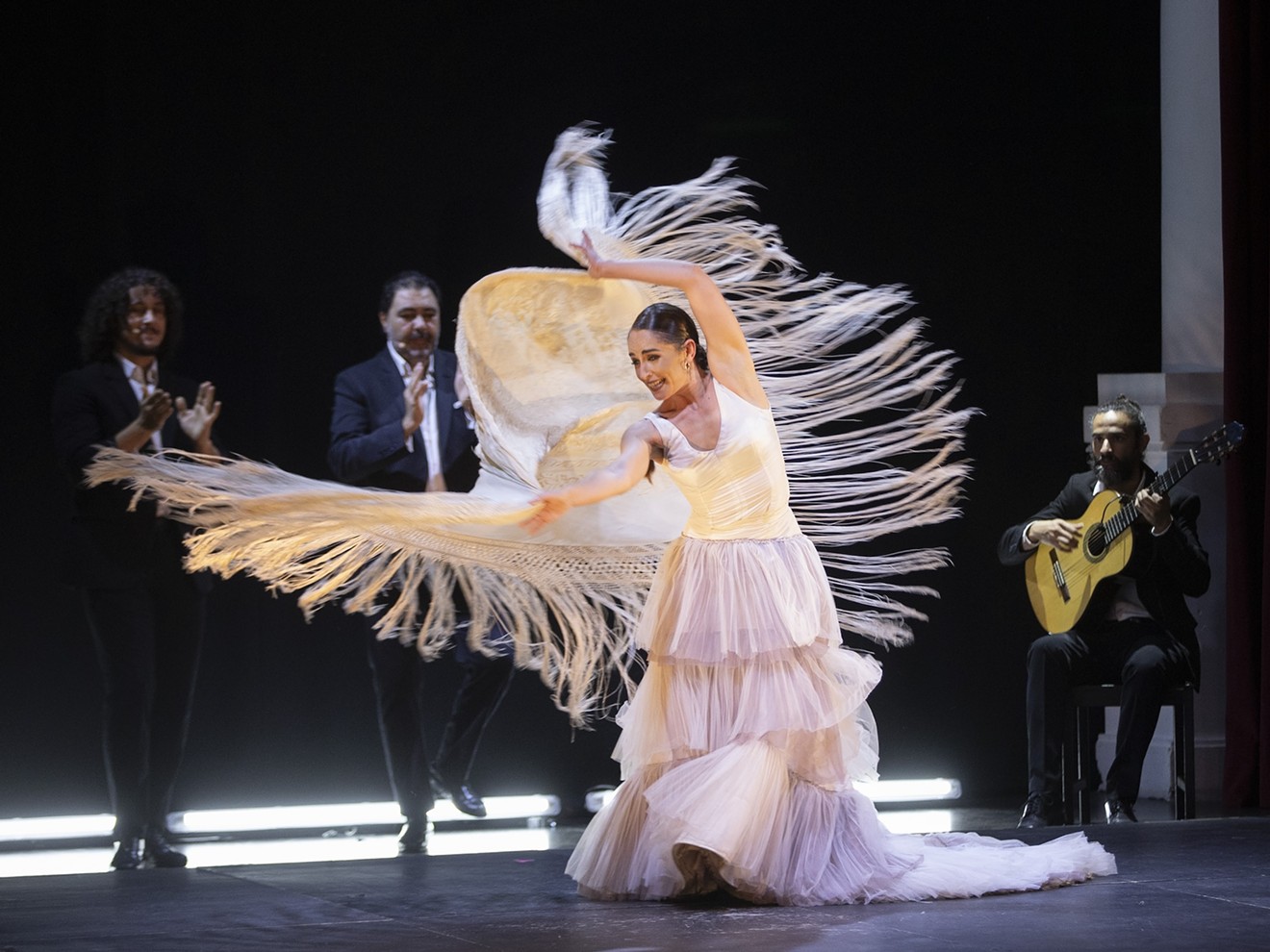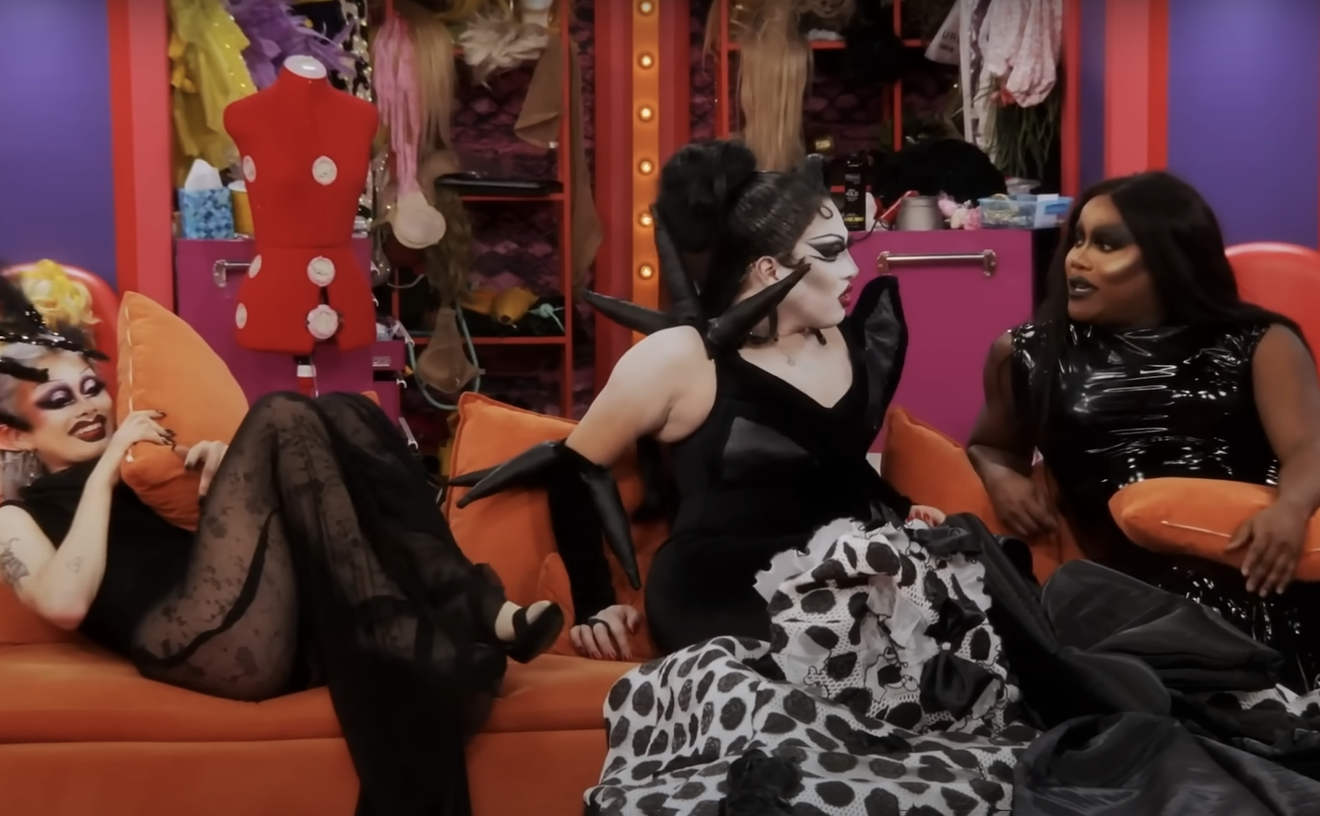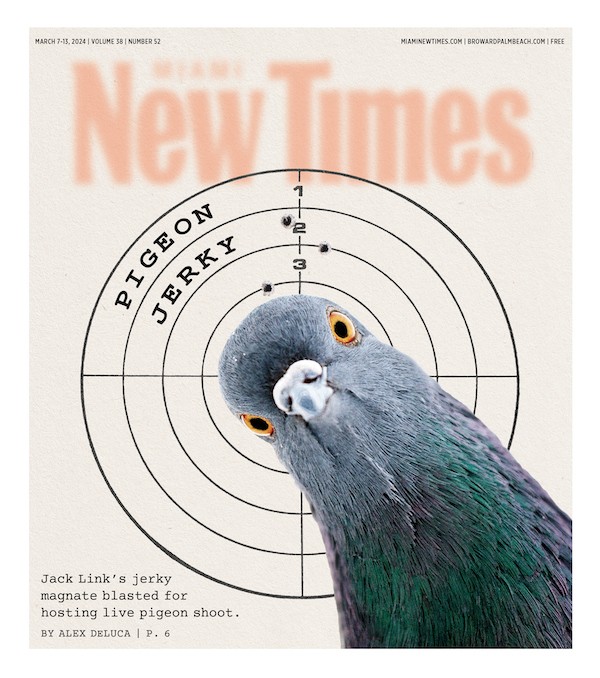This year's performances — taking place March 1-3, with the gala on Thursday, March 14 — range from intimate guitarist/dancer duos at the Carnival Studio Theater to no-holds-barred extravaganzas like the Ziff Ballet Opera House's concerts by the 38-member Ballet Nacional de España or the Stars of Flamenco gala that closes out the series in the Knight Concert Hall.
Flamenco mastermind Miguel Marín, who some 23 years ago first had the idea of bringing Spain's most current and sought-after artists to the festival's first basecamp in New York City, sounds as pumped about the fifteenth edition of Flamenco Festival Miami as he was when I first spoke to him nearly a decade ago.
"We want to be a window on what is being produced in Spain today so that people will see just what motivates these artists and what they are creating right now."
Like the blues, hip-hop, or any other art form born on the streets and practiced both by very young artists and much older ones, flamenco is constantly changing. The maxim that says, "You never step into the same river," is as true of flamenco as it is of any other living art form.
"Anyone who has come to the festival in Miami for years can see the evolution that has taken place creatively in these artists," says Marín. "It's this evolution that shows flamenco's relevance to society today...today's young people, or any audience, really, can identify with this music and dance."
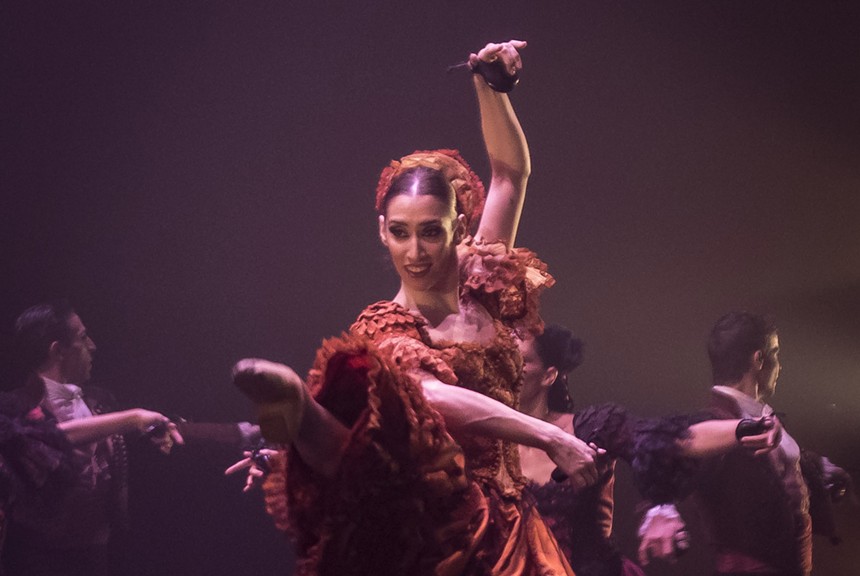
Spain’s premier flamenco dance company, Ballet Nacional de España, opens the Flamenco Festival with three performances at the Ziff Ballet Opera House.
Photo by Ana Palma
"We do not want only traditional flamenco or artistic flamenco to be known," he says, but rather "the full palette of colors" of the art form. "So, there are surprises that, at first, I didn't know if they would work or not." Marín points to “Viva” by Manuel Liñán. Shown here two years ago, it is a concert-length work in which male dancers dressed as women perform all the roles. In Miami, as in Spain itself, the groundbreaking show was a "resounding success and breaks the preconceived idea that one can have of flamenco." (This year, Liñán hews closer to tradition as artistic director of the closing night gala and a soloist in that program.)
Flamenco Festival XV is dedicated to Paco de Lucía and the mark that flamenco's most revolutionary guitarist made on world music before his untimely death ten years ago at the age of 66. It's impossible to overestimate the influence that de Lucía had on virtually every flamenco guitarist to come after him. His musical curiosity was so voracious that to cover his full impact, Marin had to choose four guitarists, using each one to highlight a different facet of the maestro's legacy.
And since de Lucía always would present a dancer as part of his performing troupe, each guitarist at the festival will also be paired with a dancer. On Friday, Antonio Rey performs with Irene Lozano, and Saturday's guitar concerts will include an afternoon show with Alejandro Hurtado and guest dancer Inmaculada Salomón and an evening performance by jazz-influenced player Rycardo Moreno and guest dancer José Maya. Sunday matinee attendees to the Ballet Nacional de España at the Ziff Ballet Opera House can bide some time after the show, perhaps have a glass of wine in the lobby, then stroll down the hall to the Carnival Studio Theater to finish off the weekend in hardcore flamencophile style for Jose del Tomate's 7 p.m. performance with dancer Karime Amaya. For this final show, both guitarist and dancer spring from flamenco royalty; the musician trained at the knee of his father, Tomatito, and the dancer is the great-grandniece of Carmen Amaya, the boundary-busting dancer whose footwork bettered that of any male dancer of her day and whose fame first brought flamenco to the eyes of an international public.
While these intimate performances occur in the Carnival Studio Theater's black box space, the sumptuous Ziff Ballet Opera House hosts the Ballet Nacional de España, which is always an audience favorite. These concerts will present a panoply of the many dance forms that Spain has given the world. Director, dancer, and choreographer Ruben Olmo, who first danced with the company when he was 18, has been on a first-name basis with the many styles his country has produced throughout his artistic career.
"I have been a bridge because I have been within the world of flamenco a lot, but also within the world of Spanish dance," he says in a telephone interview from Madrid.
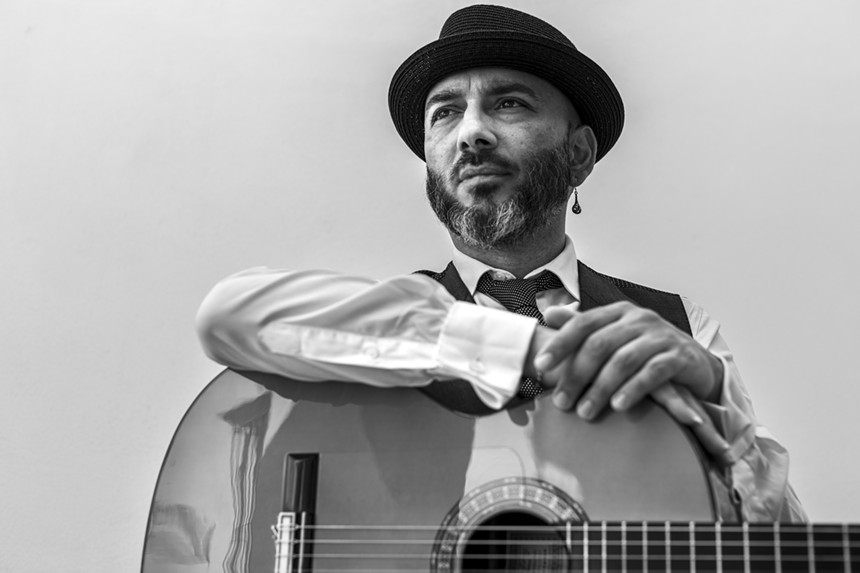
Flamenco and jazz guitarist Rycardo Moreno (pictured) will be joined by dancer José Maya on Saturday, March 2, at the Arsht Center's Carnival Studio Theater.
Rycardo Moreno photo
When the lights go down after intermission, the guitars come out — a full cast of singers and instrumentalists fill the hall with the "wonderful freshness" that, as Olmo notes, live music brings to a dance performance. For the second half of the program, Olmo has resurrected and reshaped a piece that sui generis flamenco great Mario Maya created for the inaugural season of the Ballet de Andalucía in 1994. Like much of this revolutionary choreographer's work, it is a piece that brings the gypsy experience into tight focus.
Maya, who died in 2008, was a visionary creator who "made great works of contemporary theatrical flamenco," says Olmo. A Gypsy himself, Maya was raised in Granada's Sacromonte in a flamenco clan that included Manolete Maya, who would become a dance legend in his own right, and the extraordinary guitarist Juan Maya Marote.
Maya, says Olmo, "put the Gypsies first" in his work, similar to the way in which Alvin Ailey's most seminal work shone a light on the Black American experience. In fact, Maya's studies in New York in the 1960s with Ailey and with Alwin Nikolai had shown him a different approach to dance, on the one hand, and to storytelling writ large, on the other.
"He managed to make the flamenco and contemporary one," declares Olmo, who recounts first meeting Maya as an adolescent in Sevilla, where the older man had a studio. Just 13 years old and itching to learn steps, he had signed up for a workshop with the master.
"I get to the course, and he says, 'Guys, sit on the floor.' And I thought, 'My God, I want to dance,' right? But he started the class by putting on his glasses, then picking up a book by García Lorca. He began reading to us a text from the Romancero Gitano," a collection of Lorca's poetry dedicated to the Gypsy experience.
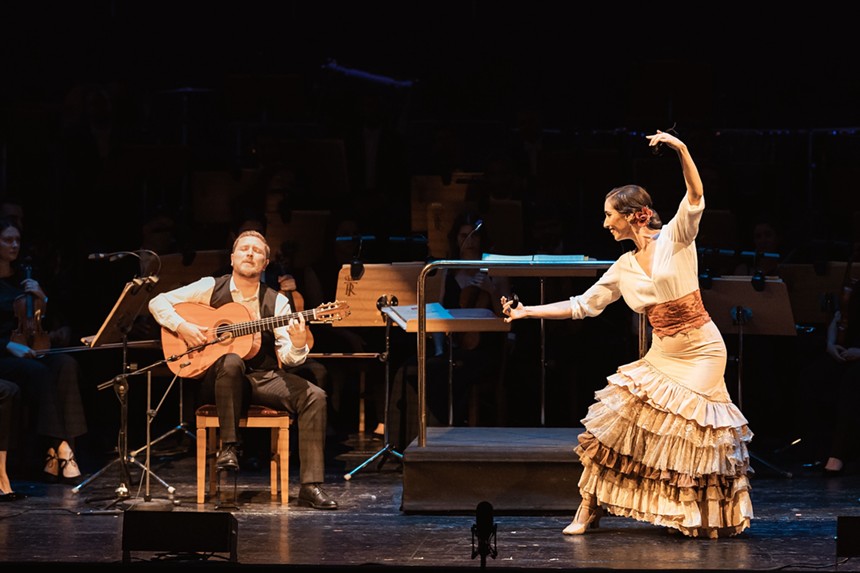
Alejandro Hurtado and guest dancer Inmaculada Salomón perform in the Carnival Studio Theater on Saturday, March 2.
Photo courtesy of artist management
Finally, less than two weeks after the upcoming performances, audiences can see straight-up, no-chaser flamenco at the Stars of Flamenco gala on Thursday, March 14. Marín characterizes the gala as "dance for the sake of dancing." At the gala, four mavericks of the flamenco world, accompanied by musicians, including vocalist Sandra Carrasco, will have free rein to showcase their own individual interpretations of the art form.
Exhibit A, says Marín, is Alfonso Losa, "one of the most virtuoso artists in existence at the moment — his level of talent is absolutely brutal." The same could be said of El Yiyo, who has already captured this city's imagination with his past performances here. In a solo, Manuel Linan will show another side of his multifaceted choreographic vision.
The gala is also Marín's opportunity to introduce Miami to up-and-coming young artists who are on the cusp of wider fame.
"I think the next big flamenco star is going to be Paula Comitre," he predicts. "She represents the future of flamenco and is already one of its great creators."
With 20 years of festivals behind him, these relative unknowns help to keep Marín's eyes on the future.
"The public that comes in ten years can say, 'I saw Paula Comitre when she was starting, and look at where she is playing now.'"
To that end, as we celebrate Flamenco Festival XV, here's to Flamenco Festival XXV and Marín's next decade of sharing this art form with the Magic City.
– Helena Alonso Paisley, ArtburstMiami.com
Flamenco Festival Miami XV. Friday, March 1, through Sunday, March 3, at the Adrienne Arsht Center for the Performing Arts, 1300 Biscayne Blvd., Miami; 305-949-6722; arshtcenter.org. Tickets cost $25 to $135.

